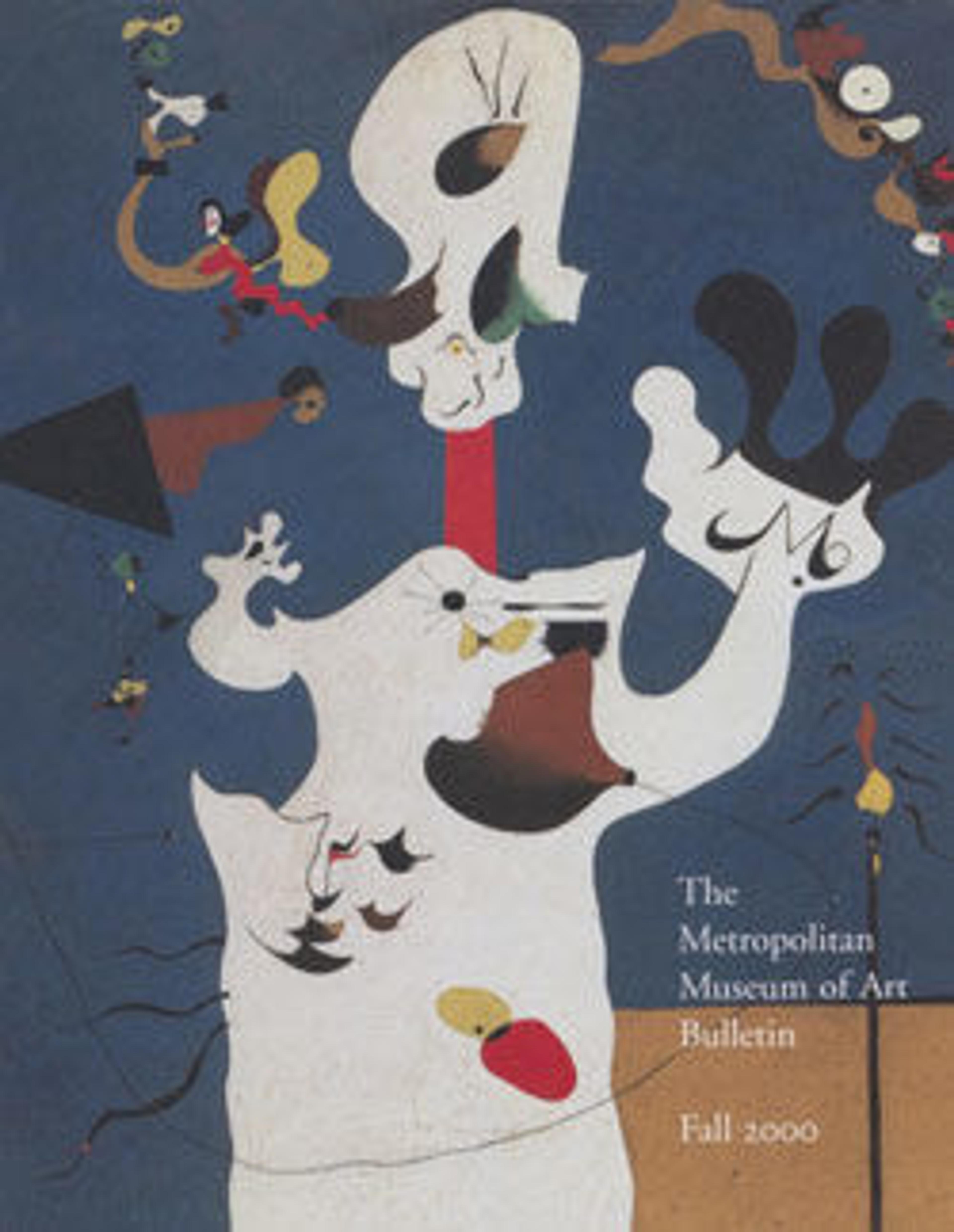The Unknown Masterpiece
Kiefer inscribed the title of this work in French at the bottom center—Le chef d'oeuvre inconnu—a title shared by Honoré de Balzac's story from 1831 in which an aging Baroque painter named Frenhofer works for many years to perfect a portrait that consumes him completely. Frenhofer labors in secret, painting layer upon layer, year after year, but when his followers finally view the picture, they discover that it is nothing but an unrecognizable and endlessly layered abstraction. They deem it the work of a genius gone mad. As if to link the madness of Frenhofer—whose story has also been read as an allegory of modern art—with the architectural fantasies of Nazi Germany, Kiefer bases the watercolor backdrop on a rendering of the projected Soldier's Hall for Berlin that was first sketched by Adolf Hitler in 1936. Albert Speer commissioned the architect Wilhelm Kreis to design its barrel-vaulted interior on a huge and unprecedented scale. It was never built. Meant as a monument and ceremonial hall to celebrate the victories of the German army, now its endless, imaginary columns are imbued with the horrors of the Holocaust.
To explain the layering in his own architecturally inspired works of the 1980s, the artist has stated his deep interest in the reuse and recycling of architecture: "You know, normally you don't destroy buildings ... usually you transform them, like the Christians transformed old temples or the Pantheon into Christian churches. That's what I was doing, too. … Because you never succeed in really destroying something, it always lives, and it's more efficient to transform than to destroy."
To explain the layering in his own architecturally inspired works of the 1980s, the artist has stated his deep interest in the reuse and recycling of architecture: "You know, normally you don't destroy buildings ... usually you transform them, like the Christians transformed old temples or the Pantheon into Christian churches. That's what I was doing, too. … Because you never succeed in really destroying something, it always lives, and it's more efficient to transform than to destroy."
Artwork Details
- Title:The Unknown Masterpiece
- Artist:Anselm Kiefer (German, born Donaueschingen, 1945)
- Date:1982
- Medium:Watercolor, opaque watercolor, graphite, cut and pasted printed papers on paper
- Dimensions:25 1/16 × 19 1/4 in. (63.7 × 48.9 cm)
- Classification:Drawings
- Credit Line:Gift of Cynthia Hazen Polsky, in memory of her father, Joseph H. Hazen, 2000
- Object Number:2000.96.8
- Rights and Reproduction:© Anselm Kiefer
- Curatorial Department: Modern and Contemporary Art
More Artwork
Research Resources
The Met provides unparalleled resources for research and welcomes an international community of students and scholars. The Met's Open Access API is where creators and researchers can connect to the The Met collection. Open Access data and public domain images are available for unrestricted commercial and noncommercial use without permission or fee.
To request images under copyright and other restrictions, please use this Image Request form.
Feedback
We continue to research and examine historical and cultural context for objects in The Met collection. If you have comments or questions about this object record, please contact us using the form below. The Museum looks forward to receiving your comments.
